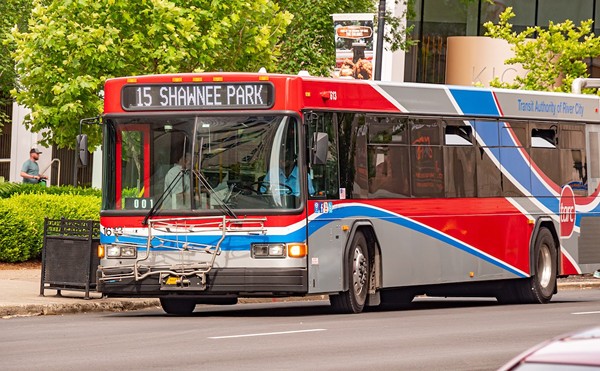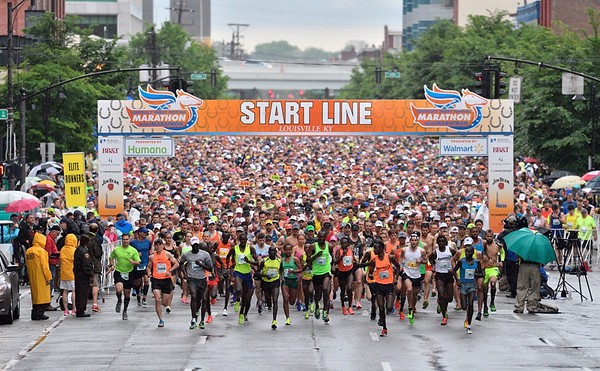If there’s a demographic less likely to watch local TV news than high school students, it might be “homes without televisions.” To the young, the idea of watching local TV is just so old-school media. Ask a teenager to name a TV news personality, and you’re likely to hear Jon Stewart or Stephen Colbert. If high school students are interested in news, the last place they’re likely to seek it out is local TV.
This is not good news for executives running TV stations. The audience for TV news is getting older, and kids in high school are using technology to get the information they want. And that info isn’t likely to air on local TV anyway.
On Friday nights, though, TV stations are still the outlet of choice for high school sports coverage. That’s why every station spends an inordinate amount of its promotional budget on branded highlights shows. On Fridays in the fall, helicopters crisscross the area covering football games. Kids interested in sports learn how to channel-flip to see the most highlights between 11:15 and 11:45.
Stations are responding to what they see as an opportunity. They’re going after the audience for high school sports by pushing it online, creating websites crammed with amateur video, pleading with the public to participate and pulling in advertisers in hopes of reaching the elusive demographic. It’s had mixed results.
“We’re trying to do a couple of things with this,” said Fred Cowgill, the station’s veteran sports anchor, who will mentor students working on the station’s High School Playbook website. “First, we can slow the decline of the age group watching TV news; that’s important for our industry. Second, sports speak to them in their language — online — and it’s a way for them to be identified with us as a TV station.”
Last week, WLKY launched its online ode to high school sports. It has provided training and equipment to 10 high school students and assigned them to produce sideline reports.
I caught one in action at last weekend’s LIT high school basketball tournament at the Gardens. Gabe, a Manual student, shot action from Manual’s win over J-town, using his station-supplied Canon HV20 high-def video camera. His online reports were brief and lacked graphics or any voice-over, more like B-roll footage. It featured some game action, but also video of the band and fans.
Gabe and his new co-workers — sort of a modern-day Mickey Mouse Club — are getting a real education in the world of new media, and they’re getting paid as part-timers by the station. But don’t expect to see their reports on the air. It’s strictly a web project, more marketing ploy than earnest journalism, an idea hatched in the corporate boardroom at Hearst-Argyle, the station’s owner.
Because of their age and privacy issues, the station isn’t making their last names public.
Hearst-Argyle has launched the concept in nine other markets. The company’s research shows that 59 percent of survey respondents expressed interest in a website on high school sports, and 74 percent had recently been to a high school game.
Terry Mackin, the Hearst exec in charge, said in a release, “… we’ve been reporting high school sports for decades. But fans, parents, players and advertisers have hungered for more, especially about their own local schools.”
WLKY’s 10 students represent Fern Creek, Pleasure Ridge Park, Trinity, John Hardin, North Hardin, Mercy, duPont Manual and Hardin County high schools in Kentucky, and Scottsburg and Charlestown in Indiana.
Another camera crew at the LIT was from WHAS-TV’s HS Gametime, the Belo corporate project launched in Louisville last fall. Unless you’re an online video enthusiast, you might not know WHAS has a budding on-air star in Joann Dickson. A web producer by day, her assignment is to interview fans, seeking out the Taco Bell Fan of the Week. Dickson is enthusiastic, coaxing high schoolers to perform cheers for the camera.
You won’t likely see Dickson’s reports on any WHAS sportscast either. She’s a relatively new addition to the station’s web experiment begun last fall. The website is slick, but it seems to suffer from lack of attention — or lack of interest. Despite heavy promotion, there’s little user-submitted content. The most recent video submission was in November. Except for Dickson’s reports, the content is dated.
“We need more public participation, but now not enough people know about it,” said WHAS news director Genie Garner. “We want to get more people involved, to get more citizen journalists, more students.”
Rick Redding, Louisville’s Media Critic, writes frequently about news and media on his blog, http://thevillevoice.com





